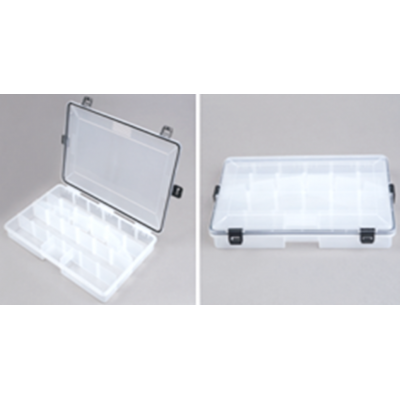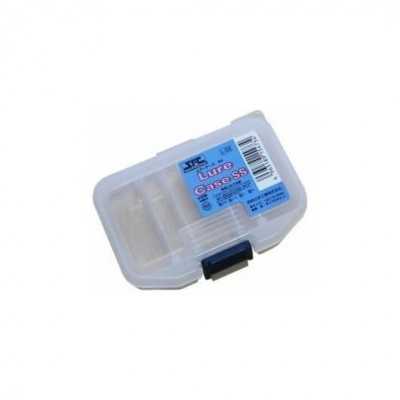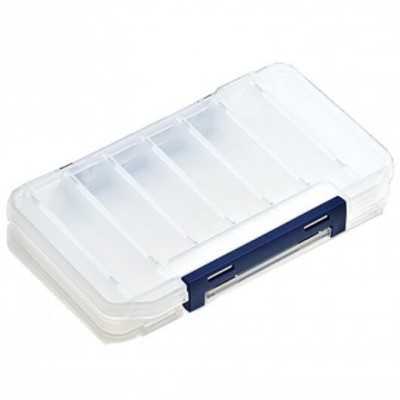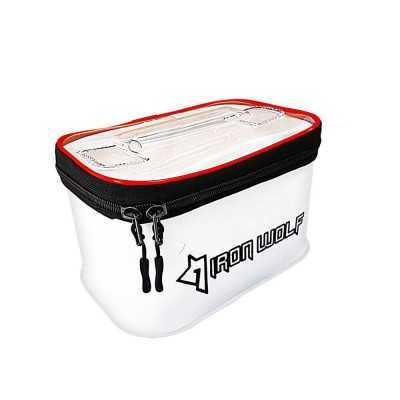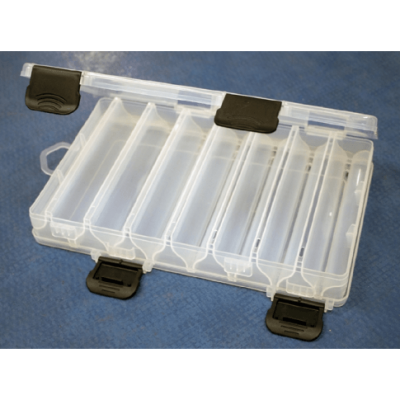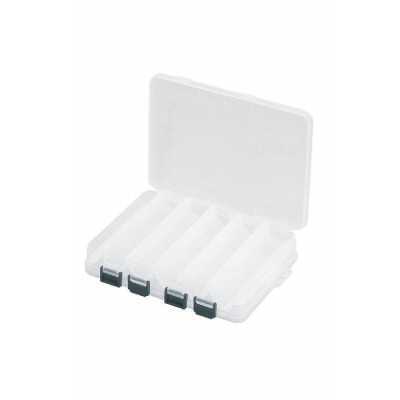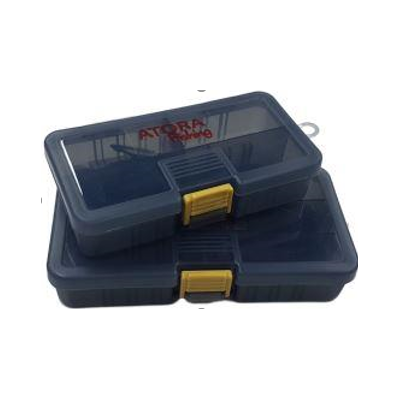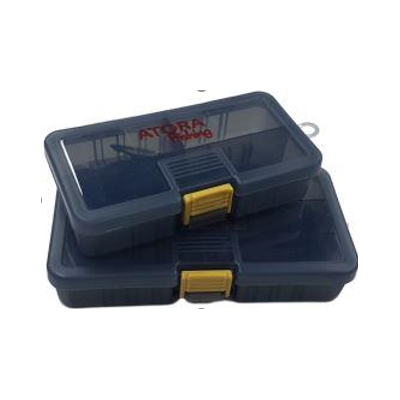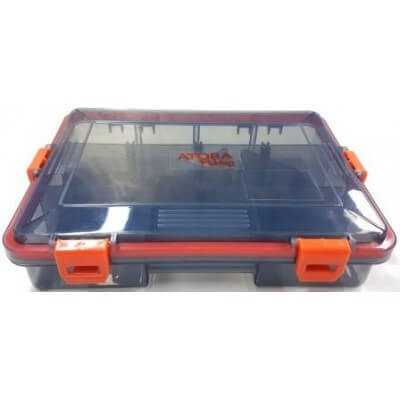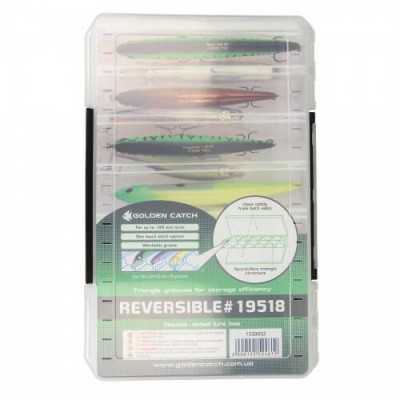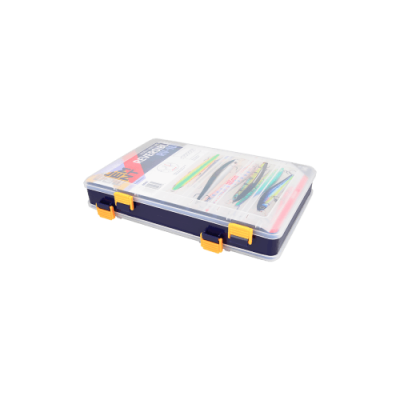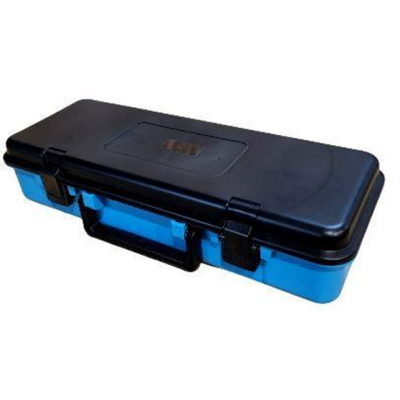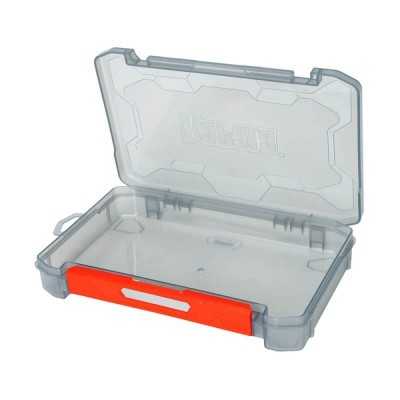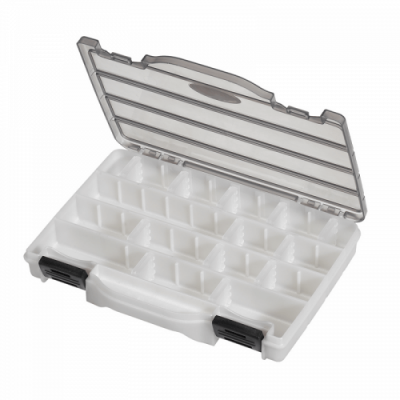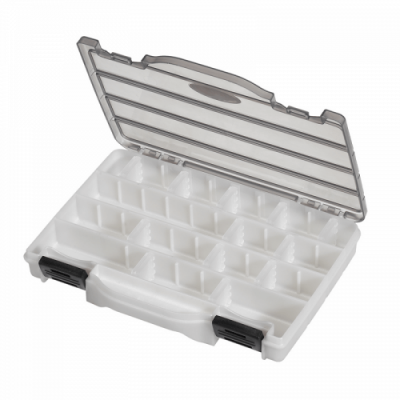Boxes
An integral accessory for the amateur fisherman, which is never enough, is the box. All amateur fishermen, no matter how they fish, use their boxes intensively. They come in all sizes, from the smallest for staples, swivels or hooks, to very large ones on which you can even sit. Fishing boxes are normally made of clear plastic. But don't be fooled, these are usually not the same plastic as tool or sewing boxes. Fishing boxes are made of better quality plastic. Try putting a variety of rubber bands in a standard cheap tackle box. There is a very good chance that the box will just start to melt. Rubber bands dissolve cheap plastic, especially clear plastic.
Fishing boxes are available in multi-purpose and special-purpose versions. A multi-purpose box is a basic box with adjustable (removable dividers) or fixed compartments. They can be opened on one side or on both sides.
As the fishing tackle industry has expanded, specialised boxes have been developed for the storage of specific fishing tackle. So, if you are thinking of taking up a particular type of fishing, this information may be useful to you. We will discuss each fishing method separately.
Spinning. Spin anglers are the fishermen with the most boxes, as they normally have a wide variety of artificial lures which are most conveniently placed in separate boxes. The most popular among anglers are boxes for wobblers. The most popular wobbler boxes are double-sided boxes with triangular compartments in which a wobbler is placed on each side. This is very convenient, because putting the wobblers together is a real torture, and they are so intertwined that it is difficult to untangle them without getting your fingers tangled. Longer rubber bands can also be placed in the same boxes, using the same principle. Another bait that is rather problematic to stack is the large rubber for pike. Here the advice would be not to put them in the boxes together with the hook systems. It is best to leave the rubber only with the spring screwed into the nose and to store it in a large box with few or no compartments. Large rubbers without tongues can be placed side by side and thus save a lot of space. It is advisable to keep the stringers separately in a multi-purpose box which will also have small compartments for weights, springs and clips. Recently, multi-purpose boxes for small lures have also been mass-produced, with small compartments that open individually for small leaders or lures, with a soft cover on the reverse side into which you can clip small headhooks. At the same time, there are larger, separate compartments for other small items. Such boxes are very convenient and practical, but their price is higher than that of a basic box.
Bottom fishing. For this type of fishing, the most problematic part is to put together the feeders. For this purpose, special boxes are made of stronger plastic so that they do not break from the weight. These boxes are usually suitcase-shaped and open on both sides. Boxes for hooks used to be very popular, but times are changing and it is now advisable to keep hooks in their original packaging. That way you will know which hook has worked in a particular situation and which has not. If you take the hooks out of their packaging, it is difficult to remember which type or brand of hook it is, so these boxes have long since lost popularity.
Float fishing. The biggest problem for float fishermen is where to fit long floats along with lead sets, hook packs and other bits and pieces. Since ancient times, float fishermen have often used hand-shaped boxes with many compartments up several floors, and at the same time long compartments where the floats can fit. However, such boxes are rather large and not very compact. You can no longer fit them in a common bag. Nowadays, smaller boxes with many compartments and one long compartment for the float are made specifically for float owners. There are also special round or pencil-shaped boxes for floats alone.
Ice fishing. Who cares, but for winter fishing the most specialised boxes are available. You can find boxes for oats on the Internet in all sizes and shapes. They come in single-sided, double-sided, or as a book with four flats for stapling oats. These boxes usually have a semi-soft coating with grooves cut into them and a hook for the oats inserted into the grooves.
